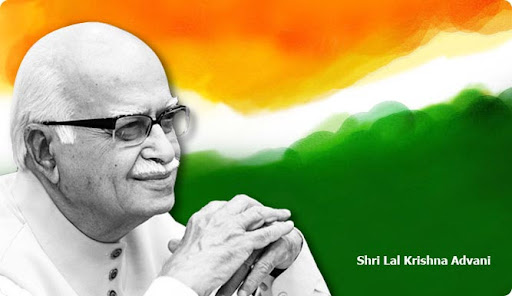On July 9, 2025, the Gambhira Bridge over the Mahisagar River in Vadodara, Gujarat, caved in claiming the lives of 20 people. The construction was just 43 years old. The collapse of the bridge sent several vehicles plunging into the Mahisagar River, triggering a massive rescue operation involving multi-agency teams.
The human toll was compounded by the fact that warnings about the bridge’s deteriorating condition had allegedly been ignored. A viral audio clip from 2022, widely circulated on social media, featured an R&B officer reportedly admitting that the Gambhira Bridge was structurally weak and “would not last long.” This pre-collapse warning underscores the public’s concern over ignored alerts and official inaction.
The Gujarat Congress accused the BJP-led State government of inaction, citing the 2022 warning from a local district panchayat member regarding the bridge’s poor state. Amit Chavda, Leader of the Congress Legislative Party, demanded public disclosure of inspection reports and fitness certificates for all bridges, emphasizing the public’s right to know which structures are unsafe.
Gujarat’s State Health Minister and official spokesperson, Rushikesh Patel, confirmed that initial findings pointed to “pedestal and articulation crushing” as the cause, indicating a structural failure. He assured the public that a high-level probe by the Roads and Buildings (R&B) Department would submit a comprehensive report within 30 days, covering both technical and administrative aspects. In response to preliminary findings of negligence, four R&B Department officials were suspended on July 10, 2025, with Minister Patel stating, “Wherever lapses have come to light, action has been taken. The government will not hesitate to take further necessary measures.”
Vadodara Collector Anil Dhameliya, overseeing the arduous rescue efforts, noted the challenges faced by teams, including “muddy conditions of the river bed and the presence of soda ash leaking from a tanker that fell into the river.” Prime Minister Narendra Modi expressed his grief, announcing a compensation of Rs 2 lakh for the deceased’s families and Rs 50,000 for the injured.

Disturbing pattern beyond Vadodara
The Gambhira Bridge collapse is not an isolated incident but rather the latest in a series of similar tragedies across India. Gujarat alone has witnessed at least six such cases since 2021. A particularly grim reminder is the October 2022 Morbi bridge collapse, a British-era suspension bridge over the Machchhu River, which resulted in a staggering 135 fatalities. Other notable incidents include the collapse of a newly constructed bridge on the Mindhola River in Tapi district in June 2023 (no casualties) and a portion of an old bridge on the Bhogavo River in Surendranagar district in September 2023, which injured four people. In August 2024, another small bridge over the Bhogavo River in Surendranagar collapsed due to sudden water discharge from an overflowing dam, fortunately without fatalities.
While Gujarat has seen a significant number of bridge failures, other Indian states have also grappled with similar challenges, underscoring a nationwide issue. Bihar, over the last 15 days of July 2024 alone, witnessed 10 bridge collapses, raising serious concerns about construction quality and material usage. The Supreme Court, on April 2, 2025, criticized the Bihar government’s explanation for these frequent incidents, calling it a “voluminous litany of its popular schemes and policies”. A particularly alarming case is the under-construction Sultanganj-Aguwani Ghat bridge, which collapsed twice since 2017, with a section falling into the Ganga River on August 17, 2024.
Similarly, in June 2025, an iron bridge over the Indrayani River at a popular tourist destination in Pune, Maharashtra, collapsed, killing at least two people and injuring 32 others. Reports indicated that the bridge was old and rusted, and designed for limited use, but was overcrowded by tourists. The Union Ministry of Road Transport and Highways has admitted that 21 bridges – 15 completed and six under construction – collapsed on the national highway network.
A comprehensive study titled ‘Analysis of bridge failures in India from 1977 to 2017,’ published in the international journal Structure and Infrastructure Engineering by Garg et al. (2020), provides crucial insights into the underlying causes of bridge collapses in India. The research analyzed over 2,130 bridge failures during this 40-year period, revealing a disturbing trend.
The study found that natural disasters, particularly hydraulic issues such as floods and scour, were the dominant cause of bridge collapses, accounting for a staggering 80.30 per cent of failures. Beyond natural calamities, the study also identified design flaws, construction errors, and inadequate maintenance as significant contributors to bridge failures. These factors often exacerbate the impact of natural events, leading to catastrophic outcomes.
A significant contributor to bridge failures is the lack of regular inspections and timely maintenance. Aging infrastructure, coupled with insufficient upkeep, leads to corrosion, material fatigue, and overall structural weakening.
Instances of using poor quality materials and inadequate supervision during construction have been widely reported. This compromises the structural integrity of the bridge from its inception. An underlying issue that exacerbates many of the aforementioned problems is corruption. It can lead to the use of inferior materials, cutting corners in construction, and overlooking critical maintenance needs.
Recognizing the gravity of the situation, the Indian Bridge Management System (IBMS) was launched in 2016 to create a comprehensive inventory of all bridges in India and assess their structural health, facilitating proactive maintenance and repair. The Railway Board has also introduced new guidelines for bridge designs, emphasizing proactive safety measures. Similarly, the Ministry of Road Transport and Highways has mandated the use of high-tensile stainless steel for bridge construction, particularly in coastal areas, to improve durability.

Lifespan of Concrete Bridges
The expected lifespan of a concrete bridge varies significantly based on design, construction quality, materials used, environmental conditions, and maintenance practices. Internationally, modern concrete bridges are often designed for a service life of 75 to 100 years, with some aiming for even longer durations, such as 120 or even 200 years, particularly with advanced materials like ultra-high-performance concrete. Regular maintenance and timely repairs are crucial to achieving and extending these design lives.
In India, the scenario presents a mixed picture. While modern concrete bridges are also designed with a service lifespan of over 100 years, the reality on the ground often differs. A significant portion of India’s bridge infrastructure is aging, with nearly 40 per cent of bridges exceeding 50 years of age. Studies have indicated that the average age of failure for bridges in India is considerably lower than their intended design life, sometimes as low as 34.5 years. This discrepancy highlights issues related to initial construction quality, inadequate maintenance, and the impact of environmental factors.
Comparing bridge collapse rates internationally reveals varying trends and contributing factors. In developed nations like the United States, while a substantial number of bridges are aging (with an average age of around 47 years and many over 50), actual collapses are relatively rare, often occurring due to extreme events like ship collisions or severe natural disasters. Comprehensive inspection programs and stringent safety standards aim to identify and address structural deficiencies before they lead to catastrophic failures. For instance, the American Society of Civil Engineers (ASCE) regularly assesses the condition of U.S. infrastructure, including bridges, highlighting those in ‘poor’ condition that require attention.
In contrast, some developing countries, including India, experience a higher frequency of bridge collapses. While global data on bridge collapses can be complex to compare directly due to varying reporting standards and definitions of ‘failure,’ the recurring incidents in India suggest a more systemic challenge in maintaining and upgrading its vast bridge network to meet modern safety and durability standards. The emphasis in many countries is on proactive management, continuous monitoring, and investment in rehabilitation to extend the service life of existing bridges and ensure public safety.



